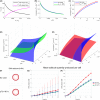pH as a potential therapeutic target to improve temozolomide antitumor efficacy : A mechanistic modeling study
- PMID: 30705757
- PMCID: PMC6349072
- DOI: 10.1002/prp2.454
pH as a potential therapeutic target to improve temozolomide antitumor efficacy : A mechanistic modeling study
Abstract
Despite intensive treatments including temozolomide (TMZ) administration, glioblastoma patient prognosis remains dismal and innovative therapeutic strategies are urgently needed. A systems pharmacology approach was undertaken to investigate TMZ pharmacokinetics-pharmacodynamics (PK-PD) incorporating the effect of local pH, tumor spatial configuration and micro-environment. A hybrid mathematical framework was designed coupling ordinary differential equations describing the intracellular reactions, with a spatial cellular automaton to individualize the cells. A differential drug impact on tumor and healthy cells at constant extracellular pH was computationally demonstrated as TMZ-induced DNA damage was larger in tumor cells as compared to normal cells due to less acidic intracellular pH in cancer cells. Optimality of TMZ efficacy defined as maximum difference between damage in tumor and healthy cells was reached for extracellular pH between 6.8 and 7.5. Next, TMZ PK-PD in a solid tumor was demonstrated to highly depend on its spatial configuration as spread cancer cells or fragmented tumors presented higher TMZ-induced damage as compared to compact tumor spheroid. Simulations highlighted that smaller tumors were less acidic than bigger ones allowing for faster TMZ activation and their closer distance to blood capillaries allowed for better drug penetration. For model parameters corresponding to U87 glioma cells, inter-cell variability in TMZ uptake play no role regarding the mean drug-induced damage in the whole cell population whereas this quantity was increased by inter-cell variability in TMZ efflux which was thus a disadvantage in terms of drug resistance. Overall, this study revealed pH as a new potential target to significantly improve TMZ antitumor efficacy.
Keywords: glioblastoma; mathematical modeling; pH; pharmacokinetics‐pharmacodynamics; temozolomide.
Figures









Similar articles
-
Temozolomide resistance mechanisms: unveiling the role of translesion DNA polymerase kappa in glioblastoma spheroids in vitro.Biosci Rep. 2024 May 29;44(5):BSR20230667. doi: 10.1042/BSR20230667. Biosci Rep. 2024. PMID: 38717250 Free PMC article.
-
20(S)-ginsenoside-Rg3 reverses temozolomide resistance and restrains epithelial-mesenchymal transition progression in glioblastoma.Cancer Sci. 2019 Jan;110(1):389-400. doi: 10.1111/cas.13881. Epub 2018 Dec 14. Cancer Sci. 2019. PMID: 30431207 Free PMC article.
-
Exosomal transfer of miR-151a enhances chemosensitivity to temozolomide in drug-resistant glioblastoma.Cancer Lett. 2018 Nov 1;436:10-21. doi: 10.1016/j.canlet.2018.08.004. Epub 2018 Aug 10. Cancer Lett. 2018. PMID: 30102952
-
Involvement of Intracellular Cholesterol in Temozolomide-Induced Glioblastoma Cell Death.Neurol Med Chir (Tokyo). 2018 Jul 15;58(7):296-302. doi: 10.2176/nmc.ra.2018-0040. Epub 2018 Jun 13. Neurol Med Chir (Tokyo). 2018. PMID: 29899179 Free PMC article. Review.
-
Dysregulated lipid metabolism in TMZ-resistant glioblastoma: pathways, proteins, metabolites and therapeutic opportunities.Lipids Health Dis. 2023 Aug 3;22(1):114. doi: 10.1186/s12944-023-01881-5. Lipids Health Dis. 2023. PMID: 37537607 Free PMC article. Review.
Cited by
-
Enhancing glioblastoma cytotoxicity through encapsulating O6-benzylguanine and temozolomide in PEGylated liposomal nanocarrier: an in vitro study.3 Biotech. 2024 Nov;14(11):275. doi: 10.1007/s13205-024-04123-2. Epub 2024 Oct 23. 3 Biotech. 2024. PMID: 39450422 Free PMC article.
-
Enhancement of Temozolomide Stability and Anticancer Efficacy by Loading in Monopalmitolein-Based Cubic Phase Nanoparticles.ACS Omega. 2024 Sep 2;9(37):38936-38945. doi: 10.1021/acsomega.4c05291. eCollection 2024 Sep 17. ACS Omega. 2024. PMID: 39310207 Free PMC article.
-
Glioblastoma multiforme: an updated overview of temozolomide resistance mechanisms and strategies to overcome resistance.Discov Oncol. 2025 May 12;16(1):731. doi: 10.1007/s12672-025-02567-3. Discov Oncol. 2025. PMID: 40353925 Free PMC article. Review.
-
Whole-Brain Intracellular pH Mapping of Gliomas Using High-Resolution 31P MR Spectroscopic Imaging at 7.0 T.Radiol Imaging Cancer. 2024 Jan;6(1):e220127. doi: 10.1148/rycan.220127. Radiol Imaging Cancer. 2024. PMID: 38133553 Free PMC article.
-
Tannic acid inhibits electrogenic Na+/HCO3- co-transporter activity in embryonic neural stem cell-derived radial glial-like cells.Neuroreport. 2020 Jan 8;31(1):57-63. doi: 10.1097/WNR.0000000000001372. Neuroreport. 2020. PMID: 31714480 Free PMC article.
References
-
- Stupp R, Mason WP, van den Bent MJ, et al. Radiotherapy plus concomitant and adjuvant temozolomide for glioblastoma. N Engl J Med. 2005;352:987‐996. - PubMed
Publication types
MeSH terms
Substances
LinkOut - more resources
Full Text Sources
Medical

